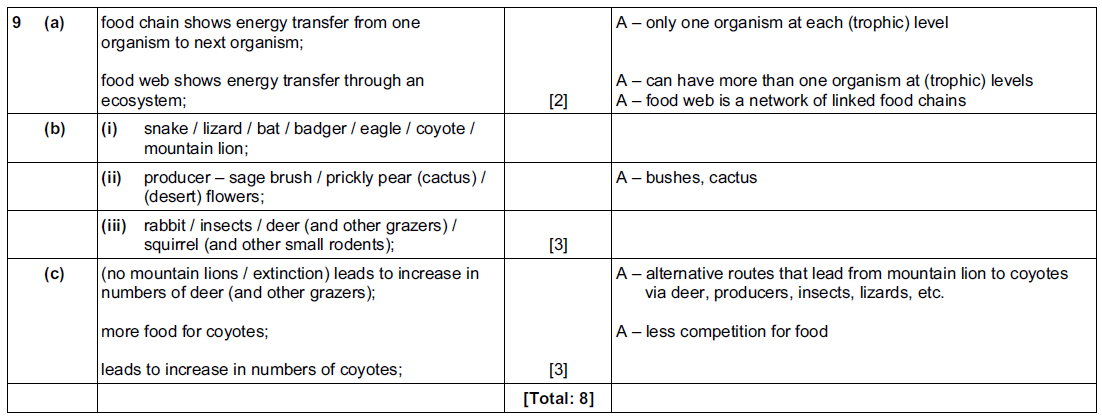Question
(a) Explain the term carnivore.

(b) Fig. 6.1 shows a food chain.

(c) Draw and label a pyramid of biomass for this food chain.
[2]
(d) The food chain shown in Fig. 6.1 starts with an oak tree.
Name and describe the method of nutrition of the oak tree.
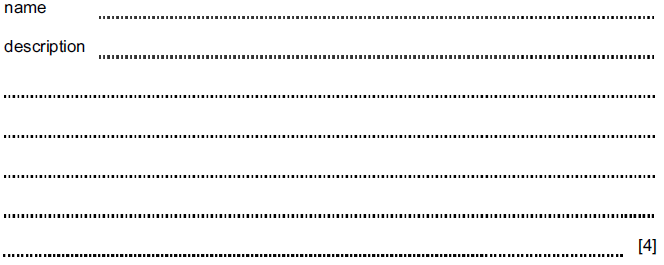
Answer/Explanation
Ans:
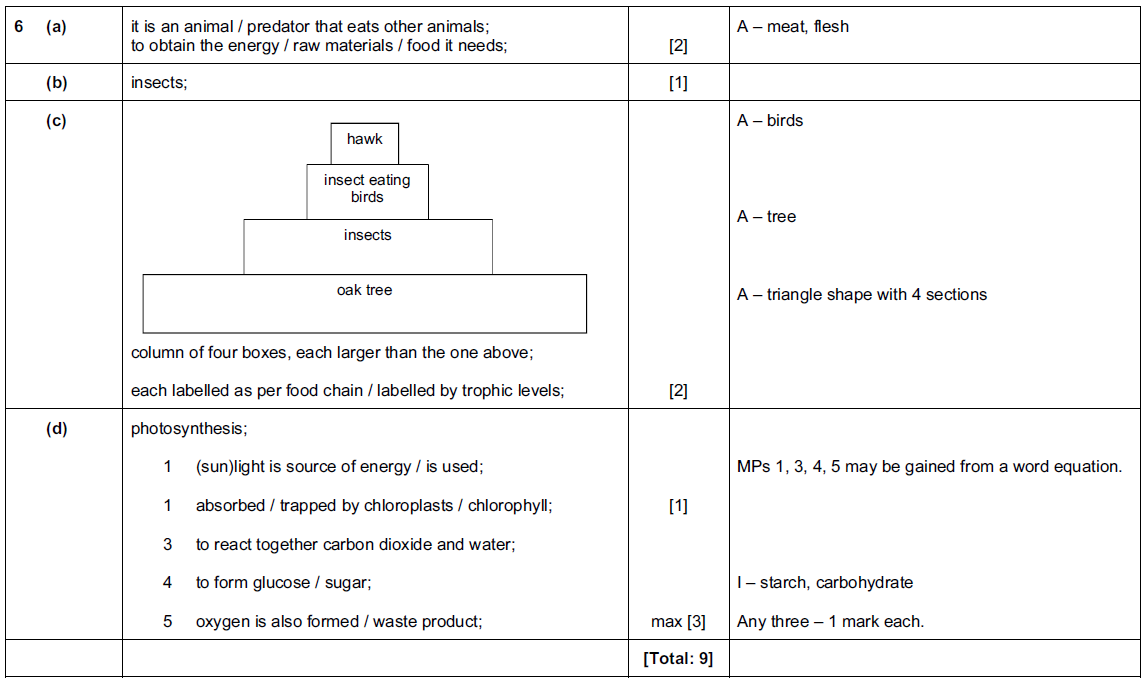
Question
(a) Ecologists studied an area of woodland and estimated the biomass of each trophic level for
one of the food chains in the woodland.
Some students wanted to use the data to draw a pyramid of biomass for the food chain.
Table 3.1 shows the students’ table.
The students added a column to calculate the width of the bars they would need to draw.
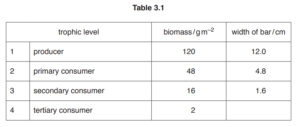
(i) Complete Table 3.1 by calculating the missing value and writing it in the table. [1]
(ii) Using the information in Table 3.1, draw a pyramid of biomass.
Label each bar with the trophic level.
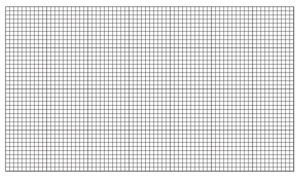
(b) A type of organism gains energy from waste organic material from all trophic levels.
State the name of this type of organism.
(c) (i) Outline how organisms in the first trophic level of the woodland food chain produce
biomass using energy from the Sun.
(ii) Explain why the fourth trophic level has the least biomass in this food chain.
(d) The woodland is a conservation area.
Outline the possible benefits of conserving this specific area of woodland.
Answer/Explanation
Ans
3 (a) (i) 0.2 ;
3 (a) (ii) pyramid shape with four trophic levels widest at the bottom ;
bars drawn at correct width (± half a small square) ;
each bar labelled with trophic level ;
3 (b) decomposer ;
3 (c) (ii) energy is lost between the trophic levels / energy decreases up the trophic levels ;
not all of the organism is, eaten / digested / absorbed ;
energy is lost, as heat / in respiration / in metabolic processes / named metabolic
process / movement ;
energy lost in, excretion / faeces / urine ;
(so) less energy to support the next trophic level ;
3 (d) 1 prevents extinction / protection of endangered species ;
2 maintains genetic diversity / biodiversity / AW ;
3 maintaining habitat / ecosystem / breeding grounds ;
4 maintain, nutrient recycling ;
5 maintain, resource provision / food / drugs ;
6 maintain, food chains / food webs / trophic levels / description of ;
7 prevent soil erosion / flooding ;
8 AVP ; as a leisure facility / tourism / education
Question
Fig. 7.1 shows a food web.
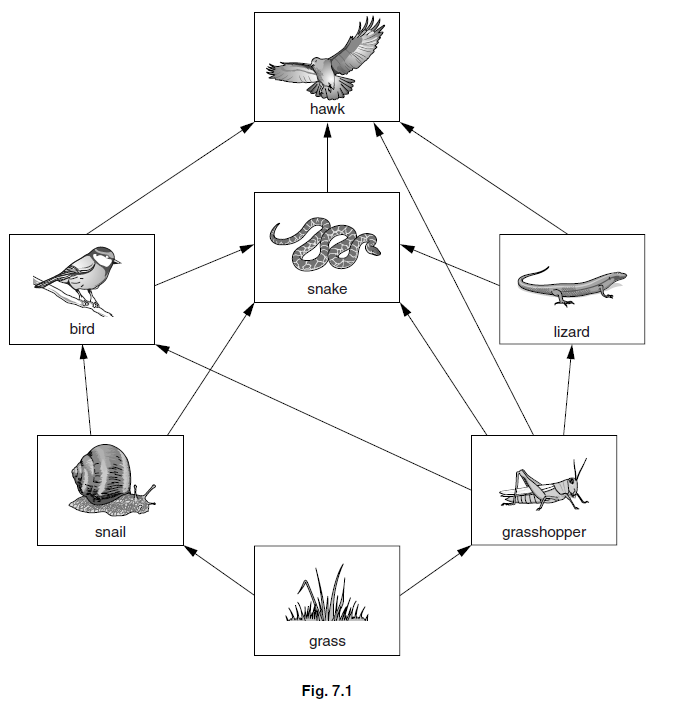
(a) State what the arrows on Fig. 7.1 represent.
…………………………………………………………………………………………………………………………………
……………………………………………………………………………………………………………………………. [1]
(b) Use the information in Fig. 7.1 to give:
the name of a producer, ………………………………………………………………………………………………
the name of a secondary consumer, …………………………………………………………………………….
the number of herbivore species present, ……………………………………………………………………..
the number of carnivore species present. ………………………………………………………………………
[4]
(c) Name an organism in this food web that occupies two trophic levels.
……………………………………………………………………………………………………………………………. [1]
Answer/Explanation
Ans:

Question
(a) Fig. 7.1 shows the relationships between some organisms in part of an ecosystem.
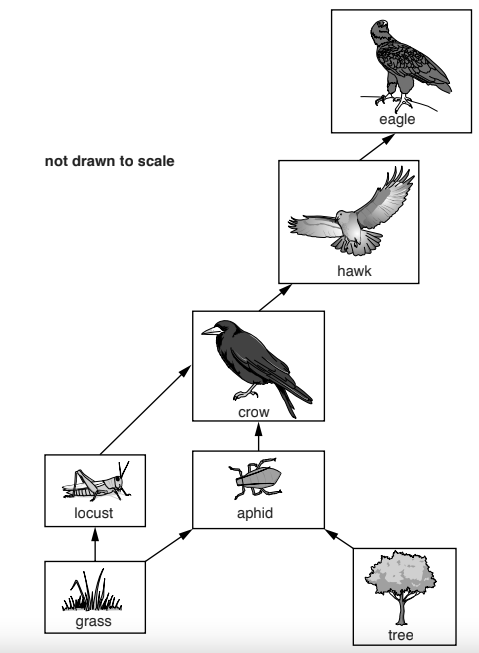
Fig. 7.1
(i) Finches are another organism in this ecosystem. These birds eat the seeds that the tree produces, and the hawks and eagles eat the finches.
Add this information to Fig. 7.1.
(ii) Suggest and explain two changes that might occur if the eagles in this ecosystem died out.
(b) The boxes on the left contain the names of types of organisms found in a food web.
The boxes on the right contain definitions of these types of organisms.
Draw a line from each box on the left to the box on the right that states its definition.
One example has been done for you.
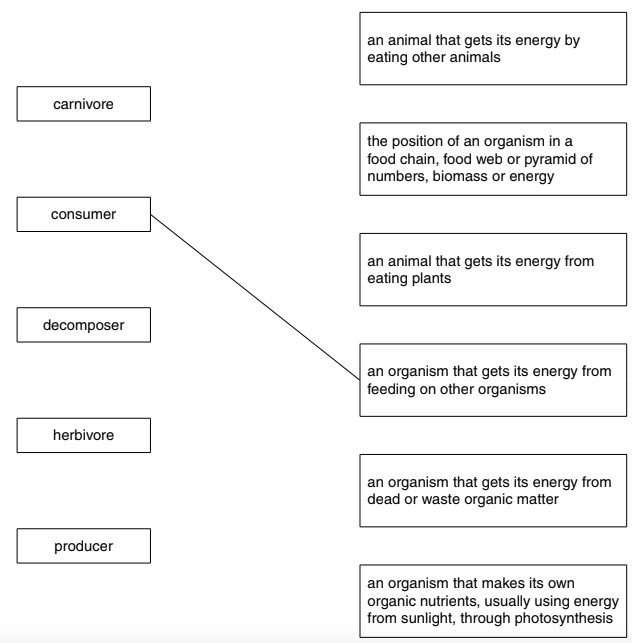
Answer/Explanation
Ans:
(a) (i) finch (in a box) above level of tree and grass ;
arrowed line from tree to finch ; R if no arrow head/ arrow head in wrong
direction/ extra incoming line
two arrowed lines from finch to hawk and eagle ; R if no arrow heads /arrow
heads in wrong direction/ extra outgoing line
(ii) increase in hawks ;
as not eaten (by eagles / no predators /AW) ;
increase in hawks ;
decrease in, everything eaten by the hawk / decrease in finch/ crow ;
decrease in crows / finches ;
as more hawks to eat them ;
increase in finches ;
as fewer eagles to eat them ;
increase in aphids and locusts ;
as fewer crows to eat them ;
any logical suggestion ; with reason ;
(b) 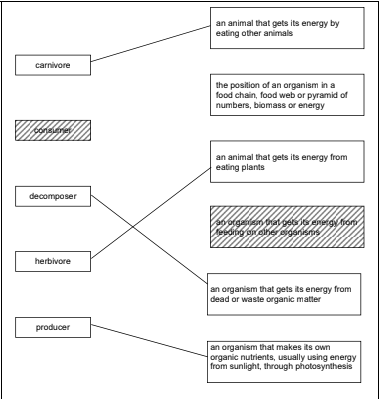
Question
Fig. 9.1 shows a food web.
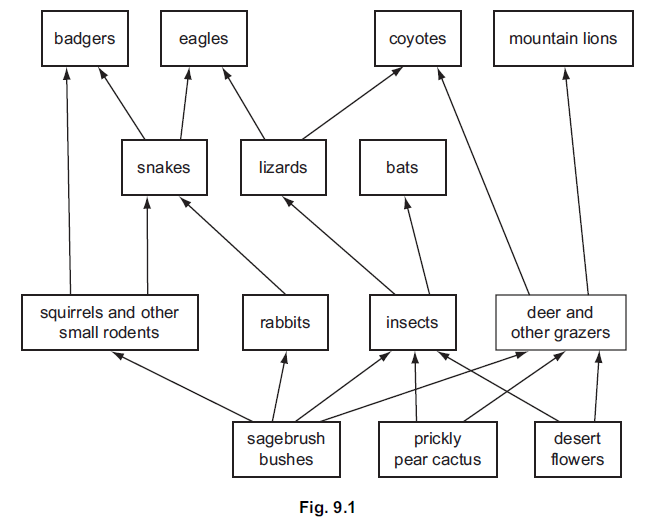
(a) Explain the difference between a food web and a food chain.

(b) From the food web name:

(c) In some regions, mountain lions have been hunted and face extinction.
Suggest how the coyotes might be affected if the mountain lion became extinct.
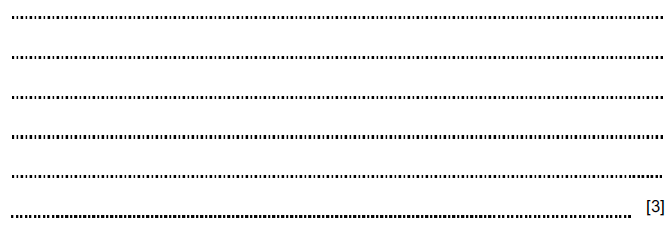
▶️Answer/Explanation
Ans: